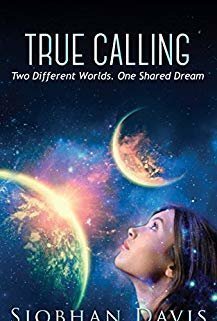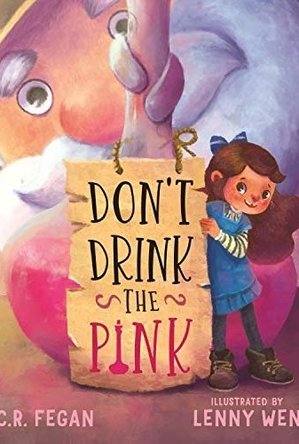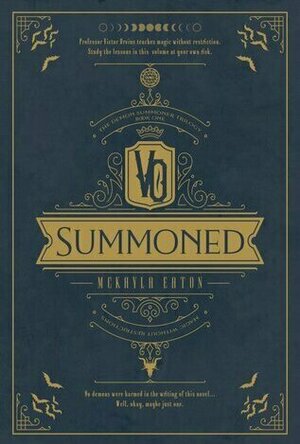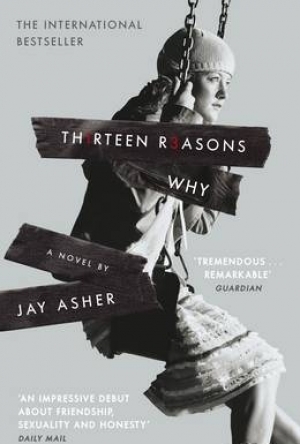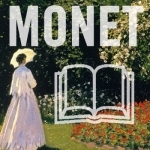
Claude Monet au Grand Palais : l’e-album de l’exposition rétrospective
Lifestyle
App
* Un livre d'art réalisé spécialement pour l'iPad * La très haute définition des images, le...
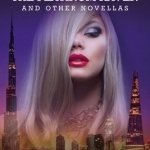
The Platinum Raven and Other Novellas
Book
"The Platinum Raven and other novellas" by Rohan Quine is a paperback comprising a collection of...
Eleanor Luhar (47 KP) rated True Calling in Books
Jun 24, 2019
Ariana is now a citizen of Novo, where only the fittest humans were transported after the near-destruction of planet Earth. From very early on, we are introduced to Zane through Ari's dreams - but she has no idea who he is, or why she can see him in her sleep. We don't discover Zane's identity until much further through the book.
A matchmaking system is set up for all eligible young people, taking the name of "The Calling." Ari realises her feelings for the popular Cal Remus, and is luckily given the opportunity to be matched with him. The whole deal with "The Calling" reminds me very much of books such as The Selection and ?Matched.
Things seem to be going pretty well (despite the fact that Ariana is appalled at the way the government is choosing who can love who) until Ariana's father disappears and leaves behind some vital information. Suddenly, Ari isn't sure whether Cal can really be trusted, and Zane is beginning to contact her directly through her mind.
A small section of this book takes place back on Earth, told from Zane's perspective. He's working for an underground resistance movement, and is still infatuated with Ariana. He gets training to try and help him communicate with her, and Ariana's father has bestowed a dying wish upon him; to keep Ari away from Cal.
Things get pretty complicated, and the love triangle is both predictable and not at the same time. Ari doesn't remember how much she loved Zane, but can sense that there was some emotion there. Cal's father is clearly opposed to his son being associated with Ariana, and is also a despicable man in himself. There are even hints as to Cal being untrustworthy, which was something I didn't actually expect.
It's kind of a typical dystopian YA novel, but it does have some good twists. My main problem was with the lack of time-keeping; I couldn't tell whether things happened over a course of a few days or multiple months. Even if the time-frame was specified in some places, it still didn't feel like it passed in the intended way.
Another thing is that the characters spoke in a rather unnatural language. Extravagant words were unnecessarily used, coupled with overly-simple phrases. It just sounded wrong.
It took me a long time to read a relatively short book, which is always a bad sign. It wasn't painfully hard to read, but I wasn't really begging to read on either. That being said, I read a little into the first chapter of the sequel, Beyond Reach, which is included at the end of this ebook, and I am rather curious as to what's going on. Still, I don't know if I'm willing to spend any money on it.
So this wasn't a great book, but it wasn't bad. Some parts felt as though the author was trying a bit too hard to make the book seem more professional, which always irritates me. I think 2.5 stars is an appropriate rating for this.
Heather Cranmer (2721 KP) rated Don't Drink the Pink in Books
Jun 27, 2019
At the beginning of Don't Drink the Pink, we're introduced to Madeline on her first birthday where her Grandpa Gilderberry gives her a box of potions telling her not to drink the pink. On every birthday up to her fourteenth, she is allowed to have one potion as long as it isn't pink. These potions give Madeline special abilities. On her fifteenth birthday, Madeline is allowed to finally drink the pink potion. You'll just have to see what happens when Madeline finally is allowed to drink the pink potion. Just be sure to have your tissues ready because it is touching.
The plot for Don't Drink the Pink is definitely entertaining and sure to have children guessing at which ability Madeline will have next. It'll also keep children wondering if and when Madeline can drink the pink potion as well as what will happen when she does. This book uses rhyming language with the last word on every other sentence. I believe this makes the book more fun and will hold a child's attention more. One thing to note, a family member does die in the book which can be quite heavy for a small child. Don't Drink the Pink doesn't go into detail about the death. The wording just mentions that this certain character passed away. I do understand why the author included the death, but it does take away from the lightheartedness of the story. However, Don't Drink the Pink is a lovely story, and that shouldn't be a deal breaker.
Madeline and her grandfather are such sweet lovable characters. It was so endearing to see how close they were. I could feel the love between them coming off the pages. I just wanted to hug them both!
As for the illustrations, I read Don't Drink the Pink on my Kindle Paperwhite, so they were all in black and white which was a shame. The illustrations were drawn very well and were very adorable. The pictures were drawn in a way that a child would love. I just wish I could have had color to the illustrations because I bet with the colors, the illustrations look even more amazing! Another unfortunate circumstance of not being able to have colored illustrations on my Kindle was that my 4 year old wasn't as entertained. However, had we have had colored illustrations, I'm sure he would have loved this story! Kudos to Lenny Wen for his talent when it came to illustrating Don't Drink the Pink. He is definitely talented!
Overall, despite the mention of a character's passing, Don't Drink the Pink is a sweet story. The rhyming is fantastic, and it has a story line that will hold a child's and adult's attention. I would definitely recommend Don't Drink the Pink by B.C.R. Fegan to adults and children between the ages of 3 through 7 although older children may like this book as well.
--
(A special thank you to TaleBlade Press for providing me with an eBook of Don't Drink the Pink by B.C.R. Fegan in exchange for an honest and unbiased review.)
TRIGGER WARNINGS: Talk of death, violence
Review:
I want to thank The Parliament House for sending me an eBook ARC to read and review for my honest opinion. I originally rated this a 4 out of 5 stars but after much thought and consideration, I am dropping it to a 3.5 out of 5 stars.
Summoned follows Alton, a bored and seventeen year old who wishes to have a new tutor that allows a more challenging experience in Alton’s magic studies. This is where Professor Victor Orvius comes into play. He recruits Alton and another, named Reagan. The only rule these two must follow is that they follow all of Orvius’ rules. If the two do that, they will be taught magic without any limits.
What Alton wasn’t expecting was to be met with such a sarcastic and brash young witch. He becomes star struck with Reagan and the two clash, becoming rivals. That is until the two must join forces because a greater threat has been summoned, a demon.
When I first picked up Summoned by McKayla Eaton, I wasn’t fully invested into the story. I didn’t get into the story until the half way point, and that was when the plot actually started getting good. Don’t get me wrong, this was an extremely easy read and I ended up blowing through it with the little spurts of time I was able to read. But something was lacking a bit.
Alton and Reagan were both relatable and not at the same time. They seemed almost “two perfect for relatability” yet they did things that I could see a teenager doing now-a-days. The whole story gave an almost Harry Potter like feel with the rebellious and angsty teenager (Reagan basically was Draco), the studious and rule follower (Alton was basically Harry Potter mixed with Hermione Granger), and the adult who maintained a large distance from his students and seemed wise beyond his years (Orvius was basically Dumbledore). I loved the vibes I was getting and I wanted to continue reading to find out what happened.
But I was met with a bit of disappointment and a cringe fest. The humor and banter was a bit much at times. The action was interesting and progressed the plot but there were also times where it seemed to slow the plot of the story. There was a ton of character development that helped even some of the plot holes but those missing plot holes really put a damper on reading.
The ending on the other hand was good and left on a major cliffhanger, but it also really felt like it was moving extremely fast. This is where some of those plot holes come into play. This is the first book in the series, so it could have been just groundwork being laid but some may find the plot holes to be a determent from picking up this book.
Is it worth the read? Yes.
Would I reread? Probably not. Don’t get me wrong, it was good and entertaining, but the plot holes really were a determent for me.
Will I continue the series? I’m honestly not 100% sure. I would like to know more about the story and see how the rest of the story unfolds, but I’m also not rushing to read them.
“Life wouldn’t be any fun if you didn’t break the rules sometimes, Alton.“

Dailyhunt (Formerly NewsHunt)
News and Book
App
Dailyhunt (Formerly NewsHunt) provides news and videos in 14 Indian languages from leading & local...

ezPDF Reader: Interactive PDF Reader for iPad
Business and Productivity
App
ezPDF Reader is the world's first and only PDF viewer with the embedded multimedia (audio & video)...

Hooked on Phonics - The #1 Learn to Read Program
Education and Games
App
Hooked on Phonics is Highly Effective and Incredibly Fun. Nurture your child's reading and...
Hazel (1853 KP) rated Thirteen Reasons Why in Books
May 23, 2017
Recently filmed as a thirteen-part Netflix drama executively produced by Selena Gomez, Thirteen Reasons Why was the first novel by the award-winning author, Jay Asher. It is the type of book readers will either love or hate, but it should definitely come with a warning. This story is NOT an accurate representation of depression and suicide.
Yes, suicide. A teenaged girl has committed suicide, shocking everyone who knew her. No one could understand why, but thirteen people are going to find out. Clay Jensen is the ninth person to receive a box of thirteen audiotapes from Hannah Baker. However, Hannah died two weeks ago. As she premeditated taking her life, Hannah recorded thirteen stories involving people from her school that caused her to snowball into deep depression and despair. Desperate to find out why his name features in Hannah’s story, Clay begins listening to the tapes in order, putting together the events that led to Hannah’s death.
What follows is a heart-breaking story showing the impact individuals have on other people’s lives, often without realising it. In some cases, the characters only played a minor role in Hannah’s life, whereas others caused significant damage. The saddest thing is, Clay could have helped Hannah, but she had pushed him away.
At times, Hannah seemed like the horrible person, calling all these people out on petty little things, but these things, along with the more horrible ones, all built up to create a life that did not feel worth living. It is eye opening how much a small action, comment or rumour can so drastically alter someone’s future.
Bearing in mind that depression affects everyone differently and has numerous causes, some readers may feel disgusted at Hannah’s extreme action, but this is the fault of the author. Jay Asher fails to completely describe the emotional torment that Hannah felt, and only someone who may have been through a similar situation, or worse, will fully be able to understand the impact everything has had on her mental health.
As Hannah beleaguers her listeners, the thirteen people start to feel like the victims rather than the “attackers”, which is most probably not what the author was intending. Now, these people will have to live their lives believing they caused a girl to commit suicide when really they were only 1/13th of the reason. Although, before criticising this novel, keep in mind it is a work of fiction.
What is most painful about Thirteen Reasons Why, is not Hannah’s plight, but the reaction Clay has to hearing Hannah’s story. Unlike the other people Hannah accuses, Clay is not one of her antagonists; all Hannah wants to do is to say sorry.
It is up to the reader to judge whether Thirteen Reasons Why is worthy of praise or not. Those without an understanding of depression may dislike it on account of misunderstanding Hannah’s reasons, whereas others may feel insulted that she killed herself over things that could have been eased had she told someone. Personally, I understand where Hannah is coming from, and although I would not go to the extremes Hannah did, I do not think she was selfish or stupid or any other insult that may befall her.
The reason I give this book a good rating lies in the quality of writing. Asher seamlessly alternates between two narratives – Hannah’s story and Clay’s reaction and reflection. Although the author may not have clearly expressed Hannah’s emotions, he successful emphasises the grief and despair Clay feels listening to the cassettes. My main concern is that Thirteen Reasons Why will only be short lived. Audiotapes were already obsolete when the book was published, but soon will there be any new readers who know what a tape is?
